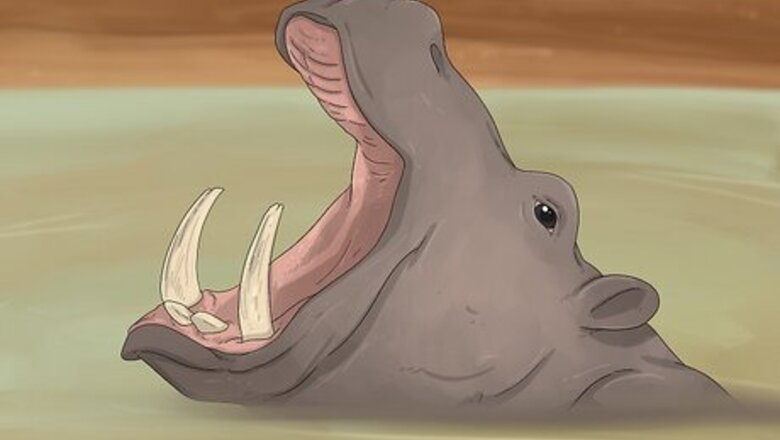
views
Why are hippos aggressive?
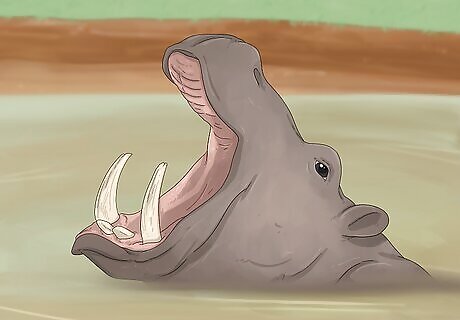
Hippos are extremely territorial and have few defense tactics. Hippopotamuses are extremely territorial. Since water is so important to them and they don’t have the bodies to handle long migrations, they will lash out at anything they perceive to be a threat. Beyond that, hippos are terrible at hiding, scaring other creatures, or running away from danger, so they’ve basically got zero other “defense” options, which means “attack anything that gets too close” is the default option. Hippos are also extremely social. They live in groups (called a bloat, school, or herd) of 20-200 hippos, so dominant males will never hesitate to lash out to defend their kin. The word “hippopotamus” roughly means “water horse.” It’s likely they’re more closely related to pigs, hogs, and whales. As fun as it would be, the plural of hippo is not hippopotami—it's hippopotamuses.
What makes aggressive hippos so dangerous?
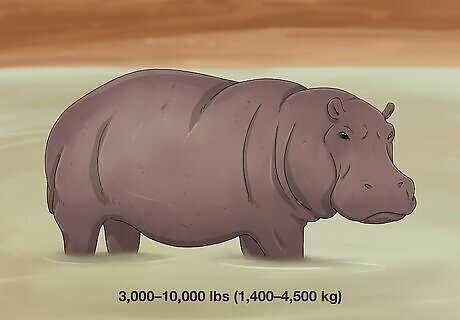
They’re absolutely colossal, which makes them hard to stop. Hippos are the third largest land animal in the world after elephants and white rhinos. They can weigh 3,000–10,000 pounds (1,400–4,500 kg), they’re often 10–17 feet (3.0–5.2 m) long, and can stand up to 5.5 feet (1.7 m) tall. Hippos are so big that they are regularly filmed flipping safari Humvees over. In fact, they can even capsize entire boats if they get too close.
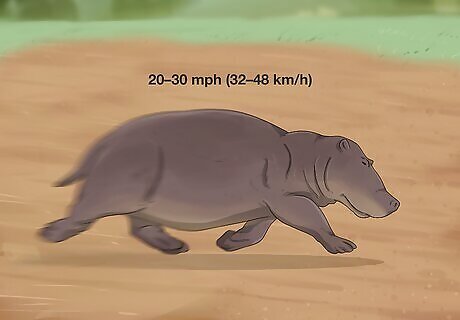
They’re actually really fast. You might think that a creature who hangs out all day lounging in a pool isn’t much of a sprinter, but you’d be wrong. Hippos can run up to 20–30 miles per hour (32–48 km/h), which would make them world-class runners compared to humans. People usually run 6–8 miles per hour (9.7–12.9 km/h), in comparison. For animals that spend 16 hours a day in the water, they actually can't swim. They walk along the floor of a lake or river and launch themselves up to the top.

They spend all day fighting one another. Hippos are hierarchical creatures, which means there are clear and distinct social roles within groups. To try and move up the social ladder, hippos will reposition themselves in the pod, rub against one another, or block another hippo’s vision of the leader. All of this can lead to huge brawls that can result in serious injuries. All of this social bickering and fighting keeps hippos on edge. It also gives them plenty of practice to charge, bite, and stomp on perceived threats.
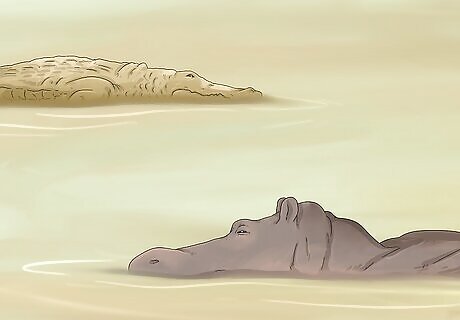
Their main sparring partners are crocodiles. Hippos and crocodiles have a lot in common. They’re both terrifying (but cute in their own way). They’re also two African creatures that basically spend all day in the water. As a result, they run into each other all the time and conflict occurs. You know who wins basically every single time? The hippos. Anything that beats up crocodiles for fun is seriously dangerous. Crocodile teeth aren’t nearly deep enough to do serious damage to a hippo, and hippos can easily outmaneuver a croc—especially on the bank of a body of shallow water.
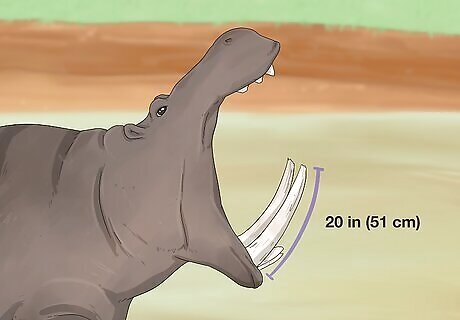
Hippo teeth are sharp and their bite is strong. Hippos have extremely sharp canines that can grow up to 20 inches (51 cm) long. They can also unhinge their jaw up to 150 degrees and chomp down at 12,600 kPa. That’s about three times more powerful of a bite than an adult lion.

People tend to misinterpret hippo behavior. Safari participants and hikers often see hippos floating peacefully in a small body of water and think it’s cute when the hippo yawns a few times. However, this is their way of showing you how big their teeth are and letting you know they'll face any threat that comes their way.
How deadly are hippos?

Hippos kill around 500 people a year. The hippopotamus is technically the most dangerous land animal on the planet; they kill more people than lions, buffalo, bears, and tigers. Believe it or not, an encounter with a hippo is more likely to result in death than an active shark attack. The stats aren’t great regarding injuries from hippos because they take place in remote areas and tend to go underreported.
What to Do if You Encounter a Hippo
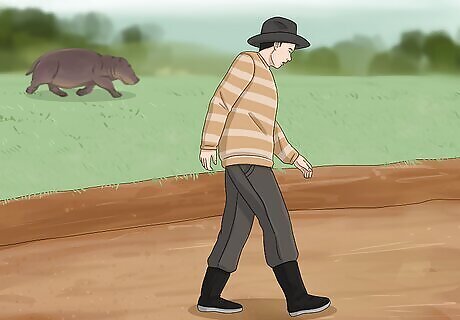
Back away slowly if you come across a hippo in the wild. Hippos want nothing to do with you. They’re herbivores, so they don’t want to eat you, and they’re not interested in chasing after people who leave their territory. If you do spot a hippo, just go in the opposite direction. If you’re going on a safari and want a close look at some hippos, bring binoculars or a camera with a telephoto lens.
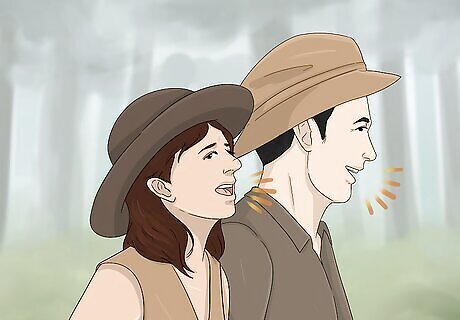
Make noise if you’re going to be in an area near hippos. Hippopotamuses are more likely to attack if they’re surprised, so if you’re out in any area where hippos might be, it’s a good idea to make a little bit of noise. Sing a song, have a conversation with a friend, or turn a radio on. This just lets hippos know somebody is in the area. That way, if you do stumble on them, they’ll already know you’re coming and take steps to get some distance.

Stay away from any hippo poop you stumble upon. As if hippos weren’t already weird enough, they actually use their feces to mark their territory. So, if you come around any large piles of feces, go back the way you came.
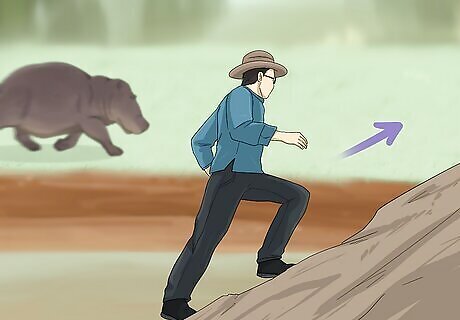
Climb a tree or get uphill if you’re chased. In the unlikely event that a hippo does decide to chase you, get as high up as you possibly can (and as fast as possible). If there’s a tree nearby, climb it and wait for help (or for the hippo to leave). If there’s no tree, climb a large rock. Even climbing a hill is preferable to staying on flat land. Hippos can’t climb at all and they struggle on inclines, so they’re likely to give up if you get some vertical height on them. Playing dead or freezing is unlikely a good choice. The hippo wants you gone, so staying where you are is unlikely to pay off.




















Comments
0 comment